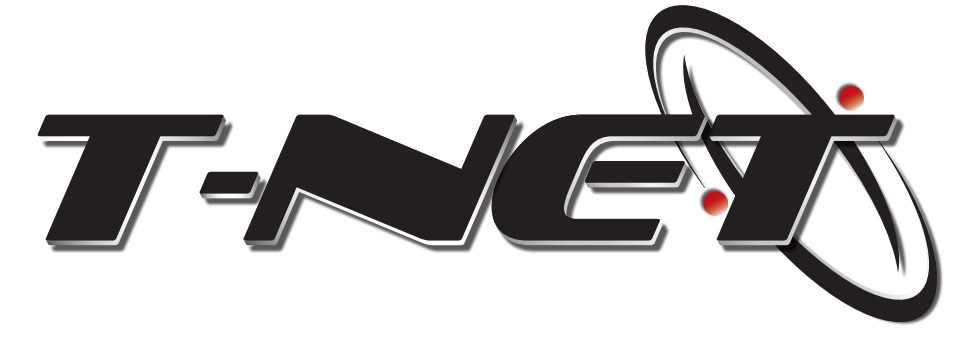Content
In the education sector, private blockchains offer solutions for credential verification, academic records management, and digital rights management. By storing educational credentials and certificates on a blockchain ledger, private blockchains can prevent fraud, ensure the integrity of academic records, and facilitate seamless transfer of credits between institutions. Smart contracts deployed on private blockchains can automate the verification and validation of credentials, reducing administrative overhead and enhancing trust in https://www.xcritical.com/ academic qualifications. In the insurance industry, private blockchains offer opportunities to streamline processes related to policy issuance, claims processing, and risk management. By creating a tamper-proof record of insurance contracts and claims, private blockchains can enhance transparency, reduce fraud, and expedite claims settlement. Additionally, smart contracts deployed on private blockchains can automate insurance processes, such as premium payments and policy renewals, improving efficiency and customer experience.
- Private blockchain gives an advantage to establish their own governance and rules model.
- It’s more than just a buzzword; blockchain is transforming industries around the world.
- In healthcare, blockchain technology might be used to track and secure patient data.
- Public blockchains, with their transparency and accessibility, enable decentralized credentialing platforms and lifelong learning ecosystems.
- This convergence of public and private has been unfolding for sometime and it points toward a more cohesive future, one where blockchain technology exists in myriad formats.
- Because PoS blockchains do not require vast amounts of computing power to validate transactions, they consume far less energy.
What’s the point of private blockchains if public blockchains exist?
In a permissionless environment, there is no way to completely get away from the cost of testing in a live environment. The first step is to use a local blockchain to initially test core app functionality. For example, in the Ethereum environment, many developers use a blockchain such as Ganache to carry out initial testing. Such a network, like Ropsten, Kovan or Rinkeby, allows you to see how your app works Stockbroker on a truly distributed environment with decentralized smart contract functionality. Effective immutability means that testers must carefully plan all testing activities to properly test blockchain apps and provide assurance that deployed code operates properly and according to specification.

Are all the top cryptocurrency exchanges based in the United States?
Node operators have fuller control over the network due to interconnectivity. Public blockchain ledgers remain permanent, immutable, and public vs private blockchain secure, providing an unalterable history of transactions. You can also listen to our recent podcast episode about public vs. private blockchain by Julian Kwan on the Infinity and Beyond Podcast. Private blockchains often operate in isolation from the broader blockchain ecosystem due to security and privacy concerns. Private blockchains can be tampered with, changed, rolled back and have its transactions even deleted.
Do You Understand How Useful Blockchain Technology Can Be To Your SME?
Truvera enables IDV providers and IAM systems to verify the same person across multiple businesses or siloed systems. It enables them to easily confirm that a user has been verified before, create a consistent view of that user’s identity and significantly reduce onboarding friction. However, there are different ways to maintain a high degree of privacy and confidentiality.
While a Web3 Internet offers a promising future, it is not a standard and needs to be built on actual technologies such as IPv6 and blockchain. This is the view of Ralph Wallace (CEO of CyberSpatiale) who was speaking at the sidelines of the recent London Blockchain Conference. Leveraging the scalable and efficient BSV blockchain, digital art is witnessing transformative use cases, driven by non-fungible tokens (NFTs) and tokenisation. Miners are incentivised to compete to process the block to receive a fee in the native currency called a block reward. This reward has been designed to reduce by half approximately every four years.
As we discussed, private blockchain provides enterprise solutions and is used widely for healthcare and supply chain industries. As these solutions require managing data among trusted parties and want a decentralised solution for transparency, a private blockchain is the best fit. In recent years, blockchain has evolved and played an important role in technology optimisation, security, and transparency. Blockchain is not just a cryptocurrency and bitcoin; blockchain has the potential to deliver good solutions beyond just cryptocurrency. A private blockchain is a concept that can show true potential beyond cryptocurrency and provide strong solutions for enterprises to maintain transparency and security. In this article, we will dive into the world of private blockchain and explore its benefits and some solutions that can transform solutions in various industries.
Private blockchains can be appealing solutions to enterprises seeking to join hands with the power of blockchain technology while not taking control over data privacy and operations lightly. These networks offer enhanced faster transactions, security, and a customisable governance model that makes it more suitable for various solutions. While there are numerous advantages of a private blockchain, there will be many more challenges as well.
The original blockchain technology proposal, published in 2009 by an unknown person (or group of people) under the name of Satoshi Nakamoto, was based on a completely new type of public data repository. This new way to store data allowed multiple nodes, or devices connected to a common network, to share copies of a data ledger, even though those nodes don’t trust one another. 1Kosmos BlockID leverages a permissioned blockchain that decentralizes identity management to your users so that information is stored in devices, not central servers. This approach, alongside a focus on identity proofing, passwordless login, and streamlined user experiences. Public blockchains are permissionless in nature, allow anyone to join, and are completely decentralized.
In contrast, private blockchains limit access to authorized members, providing greater control over data visibility and blockchain privacy. Rather, there are layers of privacy that can be applied to any blockchain, even public chains, allowing for private or “shielded” transactions on a public blockchain. This allows companies to benefit from the decentralized security of a public blockchain while concealing private information.
Smart contracts provide another critical component that makes blockchain technology suitable for the enterprise environment. Because access to the network is restricted, there are fewer nodes on the blockchain, resulting in less processing time per transaction. Conversely, permissioned blockchains restrict access to the network to certain nodes and may also restrict the rights of those nodes on that network. The identities of the users of a permissioned blockchain are known to the other users of that permissioned blockchain. All types of blockchains can be characterized as permissionless, permissioned, or both.

This immutability ensures the integrity and transparency of information, which are core features of both public and private blockchains. As a type of distributed ledger technology (DLT), blockchain is highly resistant to tampering and hacking. Altering data on the blockchain is nearly impossible due to its decentralized structure and robust cryptographic mechanisms. Even the world’s most powerful supercomputers would struggle to compromise its security. Other concerns may center on the entity that runs or sponsors the private blockchain. This entity calls the shots, potentially leaving some users on the private blockchain network to wonder if that organization’s needs will be met before theirs, she added.
Consider factors like data sensitivity, regulatory requirements, desired level of control, and the nature of your collaborations. Understanding these distinctions is the first step to unlocking the transformative potential of blockchain technology for your organization. Public blockchains offer a quick entry point into the blockchain world with established networks and protocols. However, for companies aiming for optimized performance, enhanced privacy, and bespoke solutions that align closely with their business model, a private blockchain becomes apparent. Despite the higher upfront costs and resource demands, the investment in a private blockchain can yield unparalleled advantages in efficiency, scalability, and competitive edge.
In addition to using Verifiable Credentials, off-chain data can be linked to a public blockchain by storing a hash of the information on the blockchain. By storing the hash, anyone can verify that the information has not been modified off-chain, as any changes to the original data would result in a different hash. Public blockchains allow anyone to view transaction amounts and the addresses involved. While there are general similarities between different implementations of blockchain technology, that doesn’t mean that there aren’t differences and, in some cases, improvements. LBM Solutions excels as a leading Blockchain Development Company, offering services in blockchain, software, mobile app, and smart contract development. Building a private blockchain faces challenges and one of its major obstacles is creating an ecosystem around the blockchain, Litan said.
Validators are chosen based on the amount of cryptocurrency they hold, and they use that cryptocurrency as collateral to verify and validate transactions. The more cryptocurrency a user stakes, the more likely they are to be chosen as a validator. With this validation system, PoS can enable blockchain scalability by reducing energy consumption and increasing transaction speed since it doesn’t require the same level of computational power as PoW. Public blockchains can also be used for digital identity verification and improve the privacy of customer data while still being transparent. This approach to ID verification reduces the risk of identity theft and fraud. Here is a comparison of how Dock differs from other blockchains that provide Verifiable Credential and digital identity services, some of which are private blockchains.

It could also help chronologically log patient claims — avoiding duplication with distributed ledger on a healthcare company’s centralized network. Despite these advantages of a faster, more efficient and trusted system, private blockchains also come with disadvantages as well. That’s a result of it being a centralized system with fewer nodes, reports GeeksforGeeks.







Nedavni komentarji